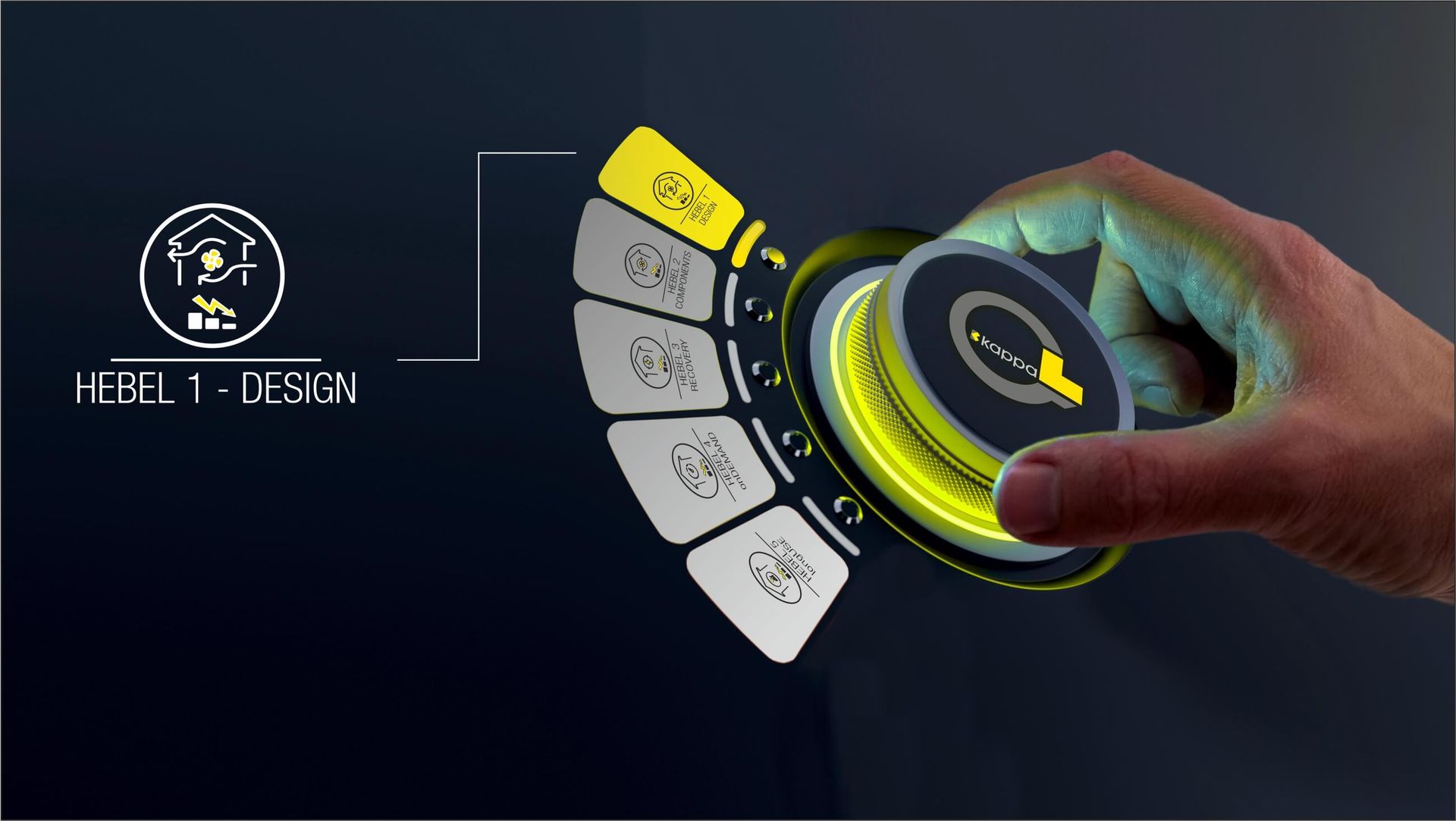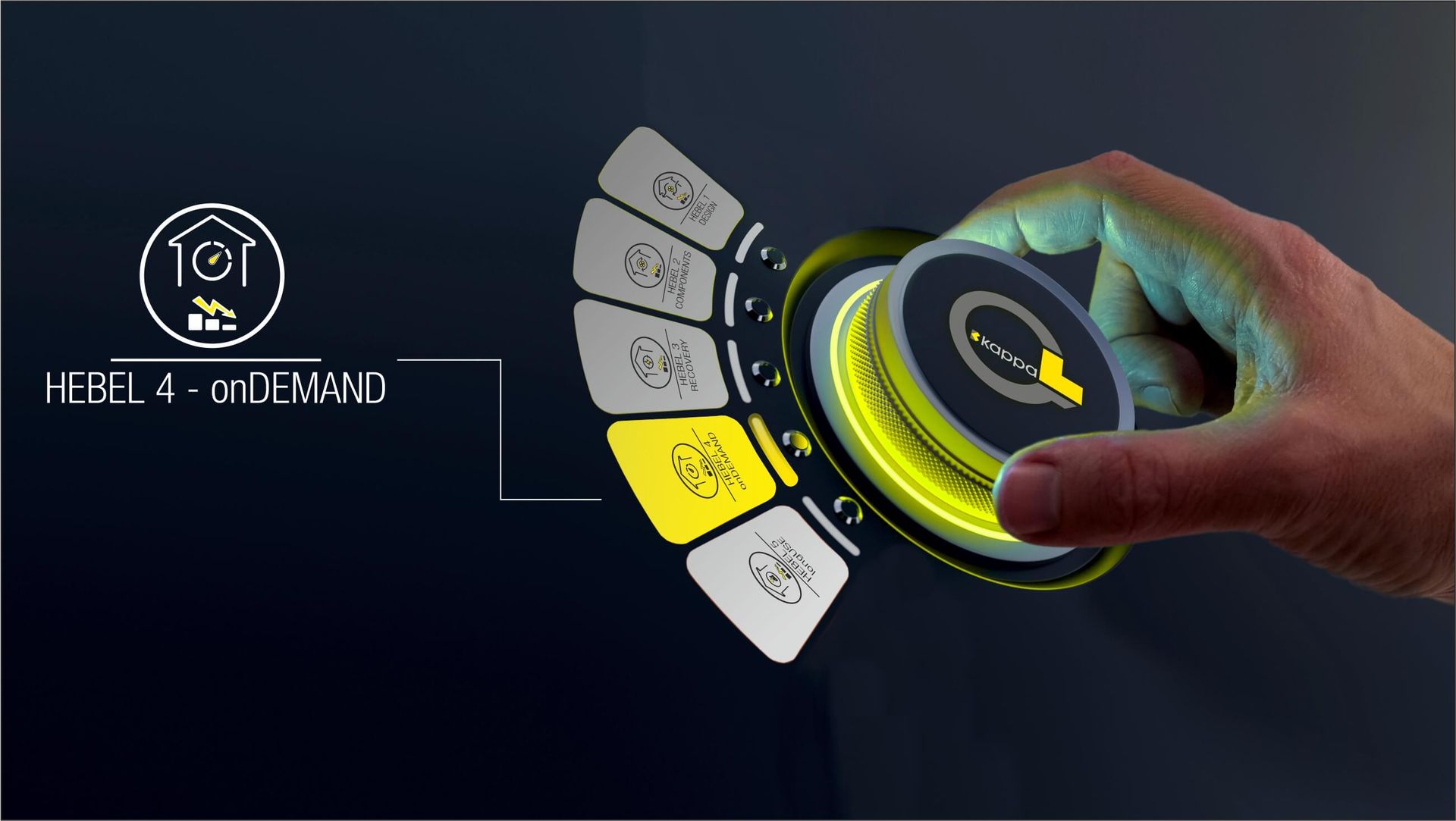>>KappaQ-Energy<< The guide to greater energy efficiency in ventilation technology
Good air is full of energy-saving potential. The price increases in energy prices are currently sparing no-one. On the contrary. Regardless of whether your company belongs to an energy-intensive sector or not, energy costs have a significant impact on your productivity. Holistic approaches and concepts for reducing energy consumption are therefore rightly becoming an immediate focus - they have become an economic necessity.
With our ‘KappaQ-Energy’ guide, we present you with a holistic method on how you can sustainably reduce energy costs in your company. As an air technology specialist, we provide you with both simple and tried-and tested methods for improving your energy balance with the help of air technology.
What exactly is energy efficiency?
Energy efficiency means nothing other than using the required energy in such a resource-efficient way that the desired output can be achieved. In the case of ventilation systems, this means moving the required air using as little electricity as possible. However, it also means using as little heating and cooling energy as possible to control the temperature of buildings. Overall, the less energy required, the higher the energy efficiency and therefore the greater the cost-effectiveness.

The importance of ventilation technology for energy-efficient buildings and production
When people think of energy-efficient buildings, they associate it with minimising heat loss and heating and cooling energy requirements. What is hardly known, however, is that air conditioning and ventilation systems in offices, public buildings and companies account for up to 50 per cent of energy costs. The energy requirement for ventilation systems is also high in production. It varies greatly depending on the production processes and the products manufactured.
Our experience shows that too little importance is generally attached to ventilation technology. It is often not set up in a way that conserves resources enough, is poorly maintained, is equipped with filter inserts that are not energy-efficient or is simply oversized. The good news is that almost all systems can be optimised. In many cases, large savings can be achieved with little effort. At the same time, the function, indoor climate, safety and comfort are improved.
energy efficiency means considering the costs of living
It is still common practice to evaluate investment projects in ventilation systems, such as extraction systems, filter systems and ventilation systems, primarily on the basis of acquisition costs. With this approach, only the directly visible investment costs are considered, while the ongoing operating costs remain hidden.
That's why we talk about the iceberg principle here. Our experience shows that the investment costs only account for 25 % of the lifetime costs of ventilation systems. Most of the rest is accounted for by operating costs. And ¾ of these are energy costs. Costs that often remain hidden beneath the surface.
That's why we talk about the iceberg principle here.

>>KappaQ-Energy<<
guide to reduce the energy costs of ventilation systems
The energy requirements of ventilation systems can be reduced on a large scale if their entire life cycle - from planning and installation to operation and ongoing support - is considered instead of individual system areas. Due to different responsibilities within the company, this requires an interdisciplinary team.
This results in different expectations, which in turn can quickly lead to additional complexity. To counteract this, we have developed a compact guide. It supports decision-makers in identifying the most important fields of action and thus creates the necessary basis for discussion.
We call this guide
»KappaQ-Energy«

Kappa-Q-Energy is the energy-saving concept for minimising the energy costs of ventilation systems.
It illustrates which factors influence the energy requirements of ventilation and air conditioning systems and which levers make it possible to massively reduce energy consumption in the long term and sustainably.
KappaQ-Energy
Minimise energy costs with five levers.
KappaQ-Energy consists of five interlocking levers that comprehensively improve the energy balance:
- Lever 1: KappaQ-Energy Design
- Lever 2: KappaQ-Energy Components
- Lever 3: KappaQ-Energy Recovery
- Lever 4: KappaQ-Energy onDemand
- Lever 5: KappaQ-Energy longUse
Each of these independent levers improves the existing energy efficiency. If several levers are used together, there are additional synergies and potential savings. With KappaQ-Energy, it is possible to cut energy costs on a massive scale and also reduce CO2 emissions.
KappaQ-Energy is a module of an overall concept
Kappa Q
It enables the holistic improvement of ventilation systems with the aim of combining progressiveness with outstanding durability and increased efficiency.
Function, safety, comfort and lasting value are optimised.








